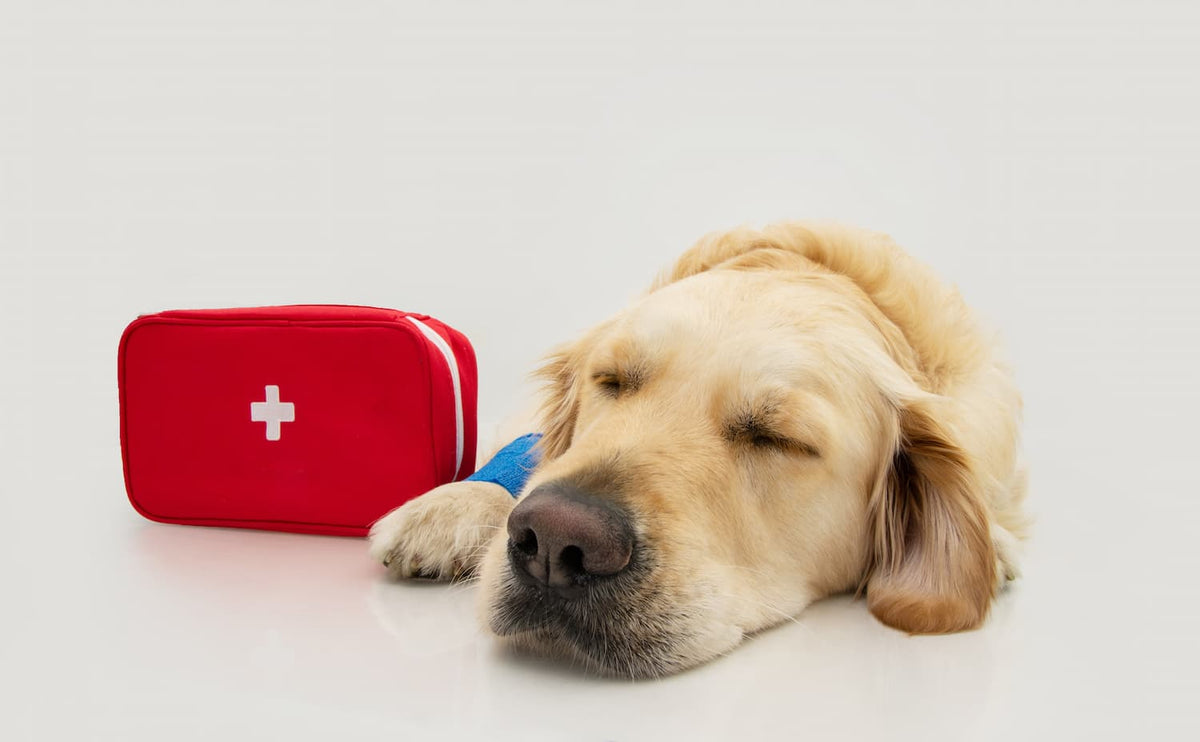
Dog First Aid: What should you have in a dog first aid kit?
|
|
Having a well stocked dog first aid kit is a great way to be able to manage common injuries safely and effectively before your dog is seen by a vet. In this blog, we explain the most useful items to carry and what they can be used for.
Table of contents
Whether you're hiking across fields, playing in the park or just relaxing at home, accidents can happen - and being prepared can make all the difference.
A dog first aid kit is an essential item for any pet owner, offering peace of mind and practical help in the event of injury or illness. From minor wounds and insect bites to more serious emergencies, having the right supplies on hand allows you to manage your dog’s immediate needs until professional help is available.
In this blog, Dani at Dog First Aid Training share their expert guidance on what to include in your kit and why each item matters.
From bandages and foil blankets to saline pods and tick removers, each tool plays a role in protecting your dog's health and wellbeing. With the right preparation, you’ll be better equipped to keep your dog safe - wherever your adventures take you.
It is relatively common for a dog to suffer a bleeding injury. Whether ripping a dew claw, stepping in glass or even from a bite from another dog. Being able to apply pressure to a wound to prevent further blood loss is critical in these situations.
You can buy bandages with a dressing already woven into it. Alternatively you can carry gauze swabs to press onto the bleeding wound before securing with a conforming bandage. Conforming bandages are elasticated so will allow you to apply gentle pressure to the wound.
Foil blankets are a great way to keep a dog warm. The blanket works by reflecting your dog's body heat back into their body. If your dog is hypothermic (losing body heat faster than they can produce it), it is best to wrap them in towels, blankets or clothing before putting the foil blanket round them.
Because they are robust, a folded foil blanket can also be used as a makeshift stretcher to carry your dog if they are unable to walk.
These have a couple of uses. Firstly they are ideal for flushing foreign objects or allergens from the eye. Because the saline mimics tears, it is unlikely to cause stinging or burning sensations. Simply pop the top off the pod and apply gentle pressure to irrigate the eye.
Secondly, these are handy to flush any debris from a wound before bandaging, reducing the risk of infection. Please note, if the wound is bleeding profusely, do not spend time flushing it; it is best to apply pressure without delay.
Ticks can be present all year round and they can carry dangerous diseases such as Lyme Disease and the less common Tick Borne Encephalitis (TBE).
Removing the tick in one piece is crucial.
Forget the tales of suffocation or burning the tick. These methods are likely to cause the tick to regurgitate its stomach contents into the dog and disease transfer is more likely. Even using normal tweezers could leave parts of the tick embedded and infection is a likely outcome.
Tick twisters are designed to remove the tick safely and simply and are a great addition to your dog first aid kit.
Being able to measure your dog's body temperature will give you vital information in an emergency. The normal range for dogs is 38-39.1 degrees Celsius.
A low body temperature could be a sign of hypothermia, canine shock, gastric torsion or underlying health issues. A high body temperature could be due to heat related illness, severe infection or autoimmune diseases.
Please note, you will need to get your vet's permission to use your dog's thermometer rectally as you are entering a body cavity.
Here at Dog First Aid Training, we love Leucillin. It is completely non-toxic and kills 99.9999% of germs on contact. It will also support healing.
Spray on wounds, grazes, fungal infections and itchy skin or use to clean ears and eyes.
Wearing sterile gloves when dealing with an open wound will reduce the risk of introducing bacteria to the wound and therefore reduces the risk of infection. Once the gloves have been used, throw them away and replace them with another sterile pair.
